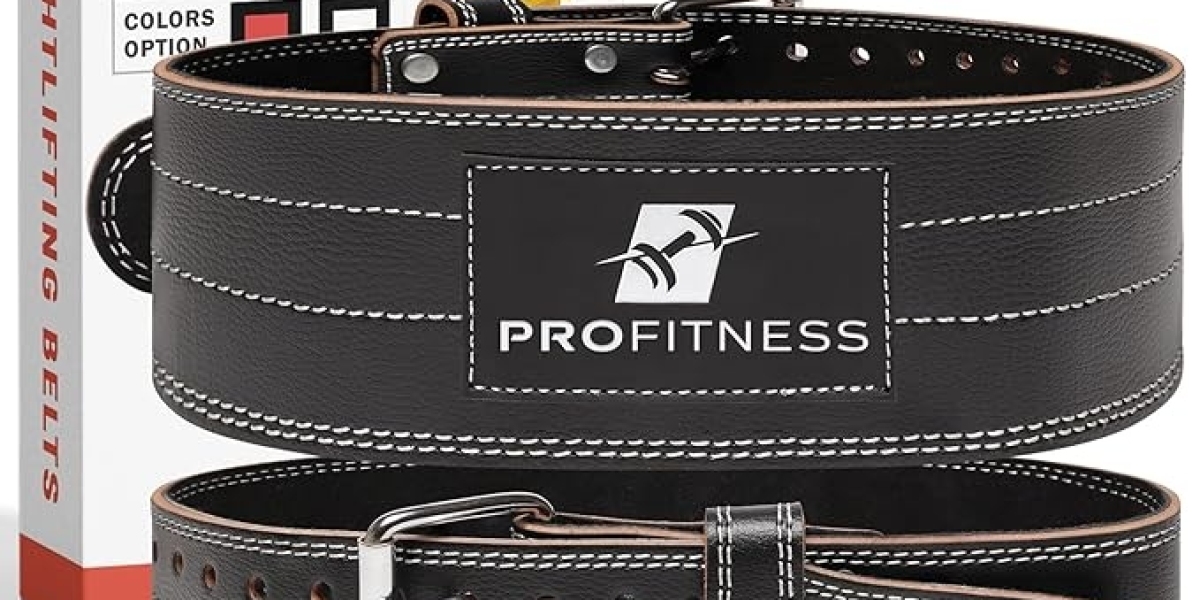Choosing the best weightlifting belt requires careful consideration of several factors to ensure optimal support, comfort, and safety during your workouts. Here's a comprehensive guide to help you make an informed decision:
Understand the Purpose: Before diving into the specifics, it's essential to understand the purpose of a weightlifting belt. The primary function of a weightlifting belt is to provide support to the lower back and core muscles during heavy lifting exercises, such as squats, deadlifts, and overhead presses. It helps increase intra-abdominal pressure, stabilizing the spine and reducing the risk of injury.
Material and Construction: Weightlifting belts are typically made from either leather or nylon. Leather belts are known for their durability, stiffness, and ability to mold to your body over time, providing a custom fit and excellent support. On the other hand, nylon belts are lightweight, more affordable, and offer greater flexibility, making them suitable for CrossFit or functional fitness workouts. Consider your preferences and the type of exercises you'll be performing when choosing between the two materials.
Width and Thickness: The width and thickness of a weightlifting belt play a crucial role in its effectiveness. A wider belt (usually 4 inches) distributes pressure more evenly across the abdomen, offering better support and stability. Thicker belts provide greater stiffness, which is advantageous for heavy lifting. However, if you're looking for more flexibility and mobility, you may opt for a slightly thinner belt.
Closure Mechanism: Weightlifting belts come with different closure mechanisms, including prong, lever, and Velcro. Prong belts feature metal buckles with multiple holes for adjustability, offering a secure fit but requiring more time to put on and take off. Lever belts use a lever mechanism for quick and easy adjustments, ideal for powerlifters and competitive lifters. Velcro belts, also known as quick-release belts, offer convenience and adjustability but may not provide as firm of a fit compared to prong or lever belts.
Fit and Sizing: Proper fit is crucial for maximizing the benefits of a weightlifting belt. It should be snug around your waist without being too tight or too loose. Measure your waist circumference at the navel level and refer to the manufacturer's sizing chart to determine the appropriate size. Keep in mind that some belts may require breaking in to achieve the perfect fit, especially leather belts that mold to your body over time.
Comfort and Mobility: While support and stability are essential, you shouldn't compromise on comfort and mobility. Choose a weightlifting belt that feels comfortable against your skin and allows for a full range of motion during exercises. Look for features like padded lumbar support, contoured designs, and tapered edges to minimize discomfort and interference with your movements.
Durability and Quality: Invest in a high-quality weightlifting belt that can withstand the rigors of heavy lifting and regular use. Inspect the stitching, seams, and overall construction for any signs of wear or weakness. Leather belts are known for their durability and longevity, while nylon belts should be made from strong, tear-resistant materials and reinforced stitching.
Purpose and Training Style: Consider your specific training goals and the type of exercises you'll be performing when choosing a weightlifting belt. Powerlifters may prefer thicker, stiffer belts for maximum support and stability during heavy lifts, while CrossFitters and functional fitness enthusiasts may opt for more flexible, lightweight belts that allow for dynamic movements and transitions between exercises.
Budget: Weightlifting belts come in a wide range of price points, so it's essential to establish a budget and find a belt that offers the best value for your money. While you don't necessarily need to splurge on the most expensive belt, investing in a quality belt from a reputable brand can provide long-term benefits in terms of performance, durability, and safety.
Reviews and Recommendations: Before making a purchase, take the time to read reviews and gather recommendations from other lifters, coaches, and fitness professionals. Pay attention to feedback regarding comfort, fit, durability, and overall performance to help inform your decision.
In conclusion, choosing the best weightlifting belt involves considering factors such as material, width, closure mechanism, fit, comfort, durability, training style, and budget. By carefully evaluating these factors and prioritizing your specific needs and preferences, you can find a weightlifting belt that enhances your performance, reduces the risk of injury, and supports your fitness goals.









